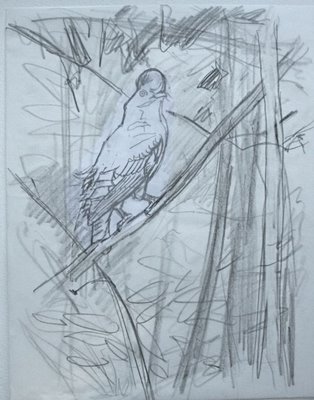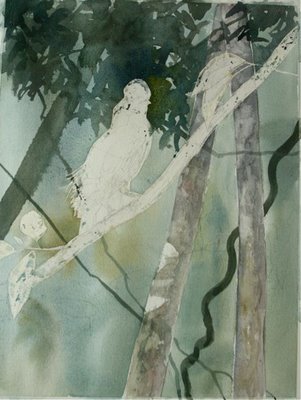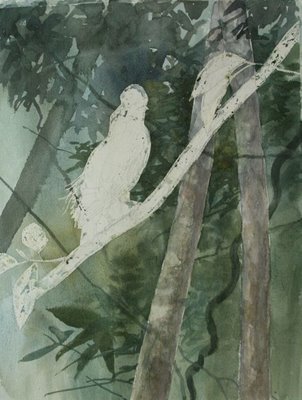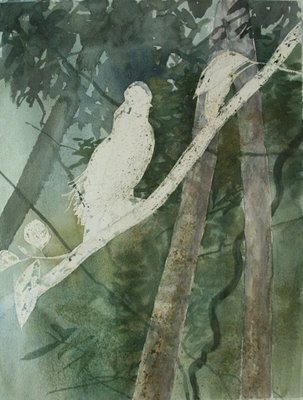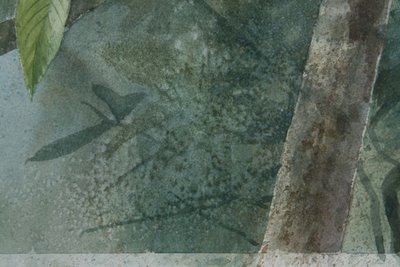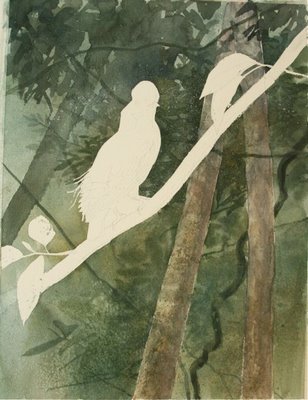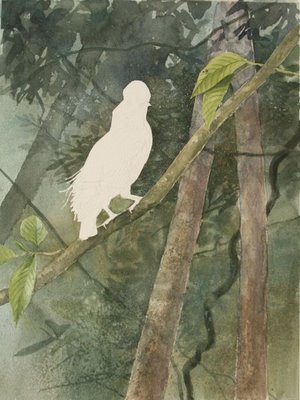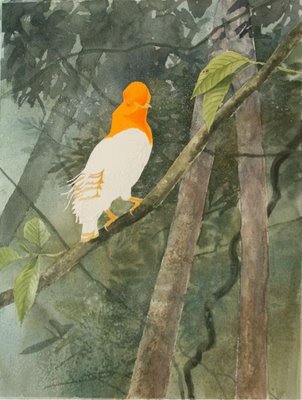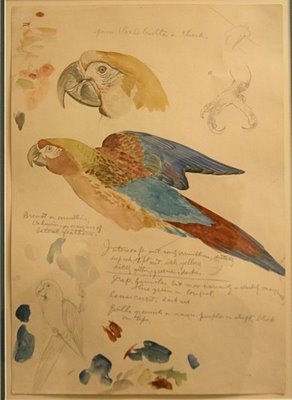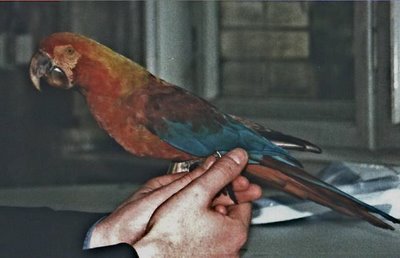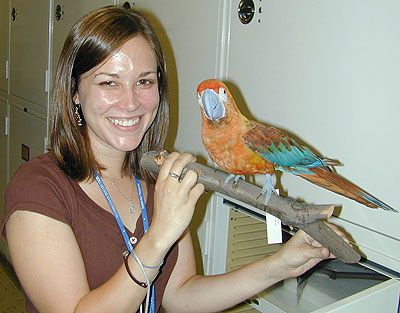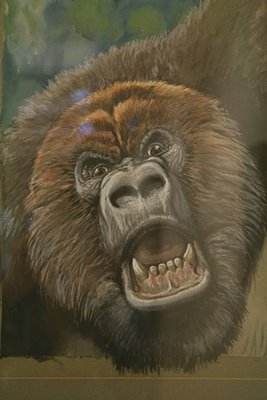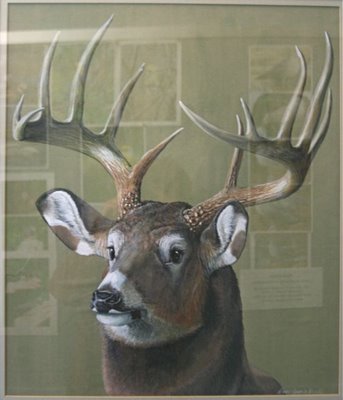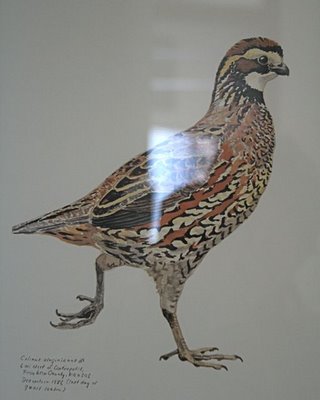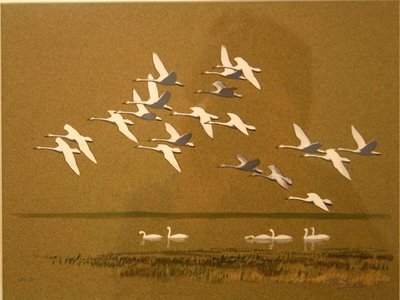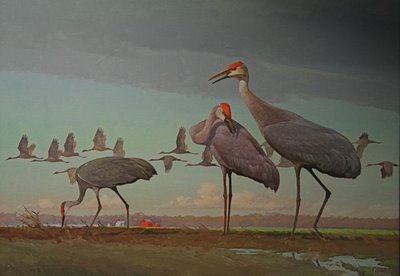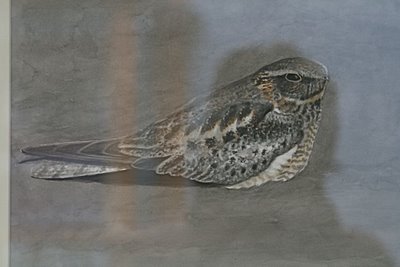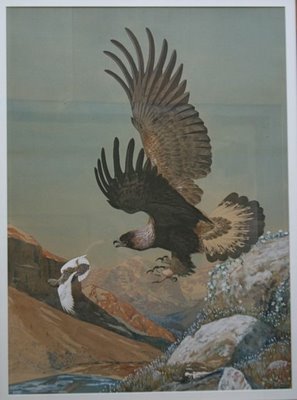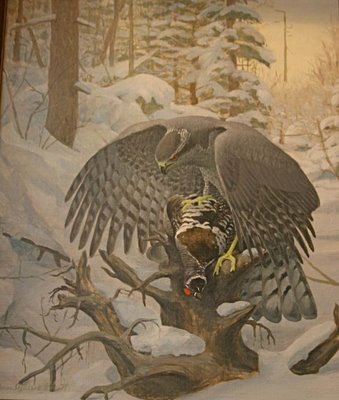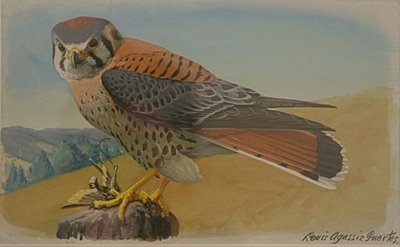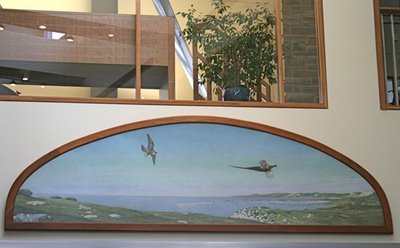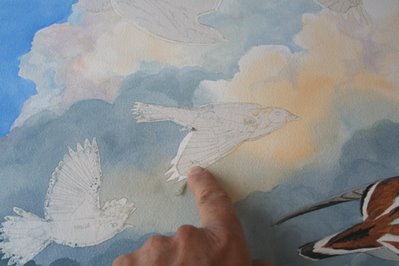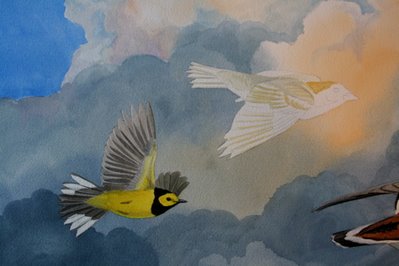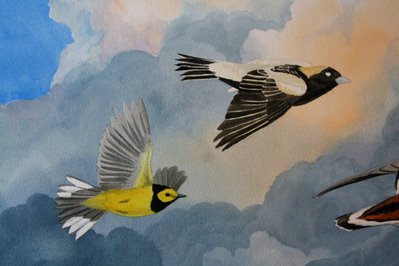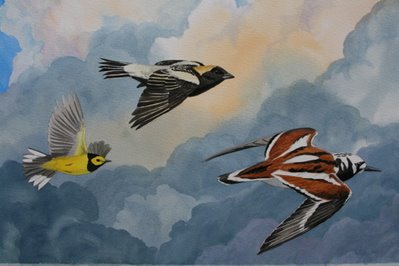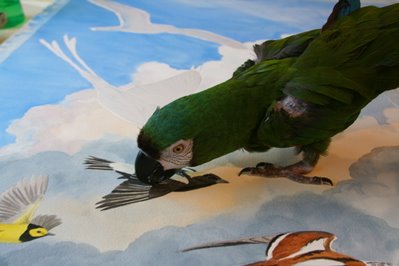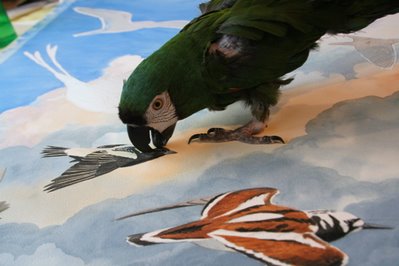Cock of the Rock, In Progress
Let's have a closer look at his head.
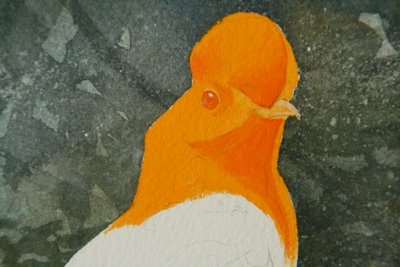
I don't want to get all fussy on this bird. I couldn't see him very well in the darkness, couldn't see much detail; he just looked like a glowing coal to me. The fun part for me is working in the detail neither I nor the camera could see, but that I know to be there.
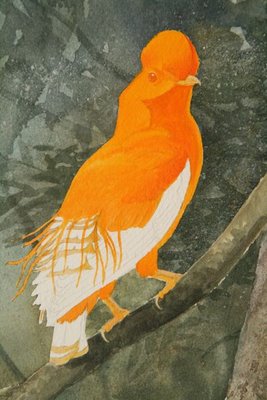 I spend some time figuring out where his feather tracts would lie, and organizing them so I can paint them right. I'm setting up tons o' fun for myself on these fancy feathers of his wings and back. His tertials are the square-ended wing feathers. And as far as I can tell, the long filaments are modified body feathers. I'm not sure about that, but they seem to originate on the lower back, so that's how I paint them. Because this is watercolor, I'm going to have to paint black in and around all those filaments. No worries. I can do that. You can see where masking compound comes in handy. I used a toothpick to draw it into fine lines, and painted the green background right over it. When the background is dry, I just rub the compound away with my finger and I can paint the bright orange where it had been.
I spend some time figuring out where his feather tracts would lie, and organizing them so I can paint them right. I'm setting up tons o' fun for myself on these fancy feathers of his wings and back. His tertials are the square-ended wing feathers. And as far as I can tell, the long filaments are modified body feathers. I'm not sure about that, but they seem to originate on the lower back, so that's how I paint them. Because this is watercolor, I'm going to have to paint black in and around all those filaments. No worries. I can do that. You can see where masking compound comes in handy. I used a toothpick to draw it into fine lines, and painted the green background right over it. When the background is dry, I just rub the compound away with my finger and I can paint the bright orange where it had been.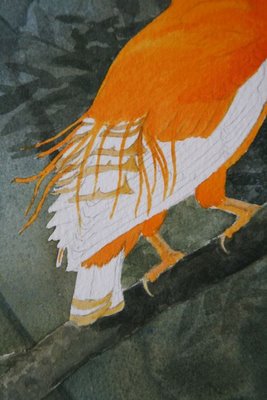 It looks pretty cool now, with the orange playing off the muted greens and grays of the background.
It looks pretty cool now, with the orange playing off the muted greens and grays of the background. 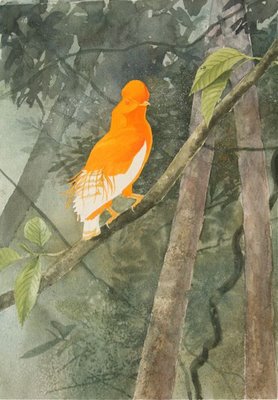
But the painting will really take off when the black goes in. Oddly enough, I was most impressed by the bird's black and white wings, and I couldn't wait to set the bird off by painting them in.
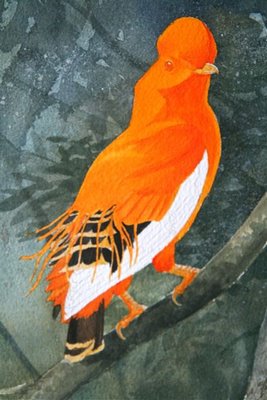
Look how the whole scene comes alive with the punctuation of black.
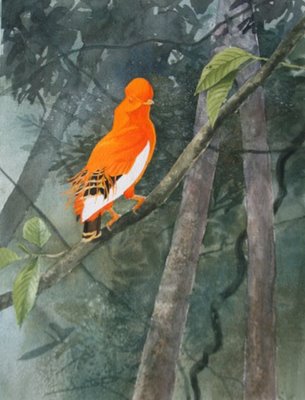
What fun to paint in his details--the burnt edge of his semicircular crest; his eyes, his gorgeous wings. I noticed in observing him that his crest was like two lemon thin cookies on edge, parting to admit his beak, so I emphasized that structure in my painting. I've also painted in some wing detail that I think is probably there, but which I can't discern in my photos. Needless to say, I'd love to have a specimen in hand to work from, but that's not going to happen any time soon. I'm winging it here.
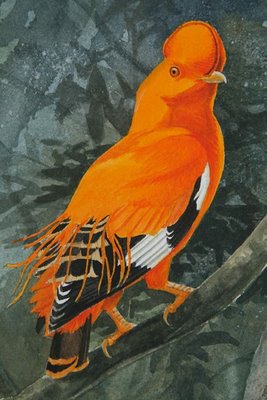
Now the muted greens seem to work well, letting the bird be the star of the show.
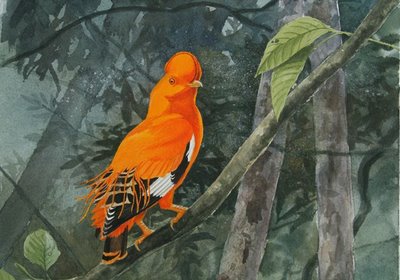
The finished painting.
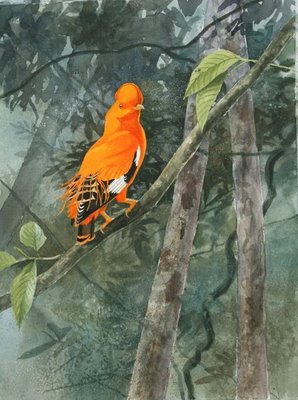
Managed to finish it in time to send it off and get it framed by our good friend John at Frame & Save on High Street in Oxford, Ohio. He returned it in a huge wooden crate that someone had used to send some photos by Linda McCartney over from England. The crate had been secured with screws, so I wrapped up a Phillips head screwdriver and gave that to Bill in his stocking before he got his big present. Whaa?
John always gives me a joke to tell Bill when we talk. Here's the latest:
Guy walks into a bar and out of nowhere a voice comes, saying, "Man! You look great! Have you lost weight?"
He looks around and doesn't see anyone but the bartender, wiping the counter. "Who just said that?" he asks the barkeep.
Bartender says, "Oh, it was the peanuts. Just ignore them. They're complimentary."
Labels: bird painting, cock of the rock, Guyana, Watercolor painting

